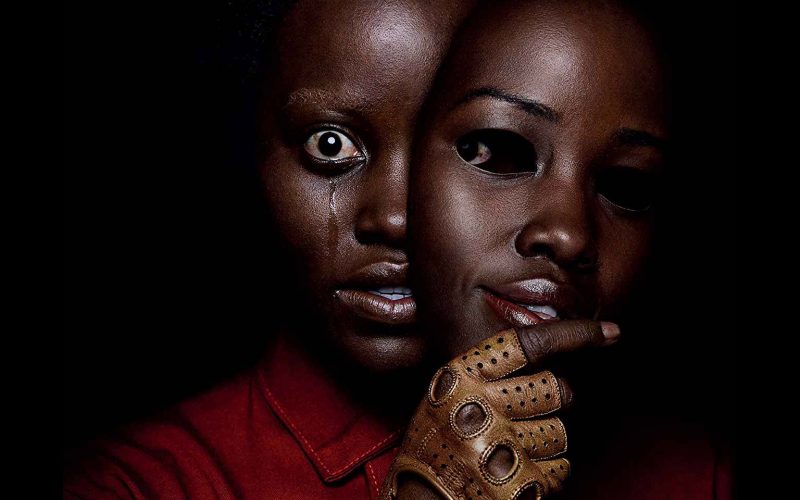Us (2019).
The climactic conflict in Jordan Peele’s second directorial feature is a masterwork of editing, choreography, and sound composition. By the film’s conclusion, it tethers itself tightly to its mysterious, patient opening sequence. Peele tests his audience with a belated prologue and an opening credits pull-back that may have some squirming in their seats a little. But if we can take anything away from Us, it’s that everything on the screen is meticulous and purposeful. It’s a perfect follow-up to Get Out, an ambitious, spine-tingling journey that’s evidence of a director that isn’t content with only maintaining the quality of his previous release.
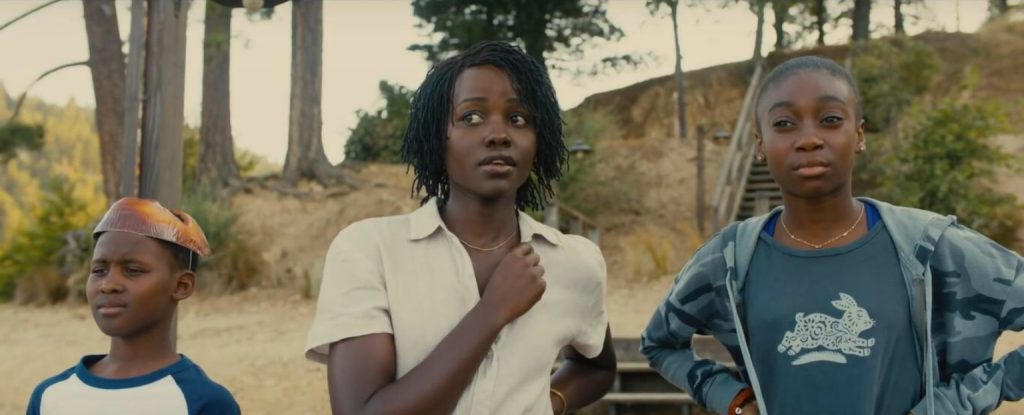
Us begins at a carnival on the beach during which a child wanders off from her parents and into a hall of mirrors exhibit. There’s a lingering tension throughout the scene but it isn’t manufactured in an artificial sense. Instead, and frequently throughout the film, the horror is earned. There are no cheap thrills here. No misleading the audience. It’s all build-up and payoff, which may leave some feeling as though Us isn’t truly scary. But the best horror crawls under your skin. It’s about the fear of the unknown. Following the prologue we meet the endearing Wilson family, and the dynamic is wholesome and, above all else, comedic. Lupita Nyong’o plays Adelaide, the little girl from the prologue who’s now a mother of two and wife to Abraham (Winston Duke).
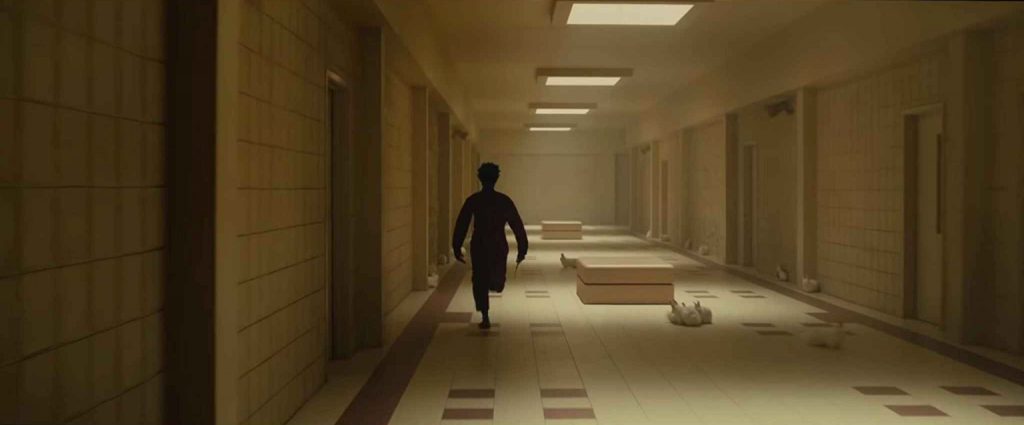
Adelaide is still dealing with the trauma from her childhood, and when the family plans a trip to the same beach she’s understandably hesitant. Peele is patient with his reveals, and there are new discoveries to be had throughout the film’s run. Evan Alex plays the youngest child, Jason, and Shahadi Wright Joseph is their daughter on the cusp of adolescence, Zora. The performances of all four family members, as well as their dual roles, are magnificent. The back and forth between them creates a dynamic that’s simple and easy to latch onto. It takes all of half an hour to instil in us the feeling that the last thing we want is to see harm come to any of these characters. Nyong’o entirely steals the show with her mesmerizing performance. Her ability to carry this film cannot be understated, particularly when she’s at the fore of a story that’s so skillfully told.
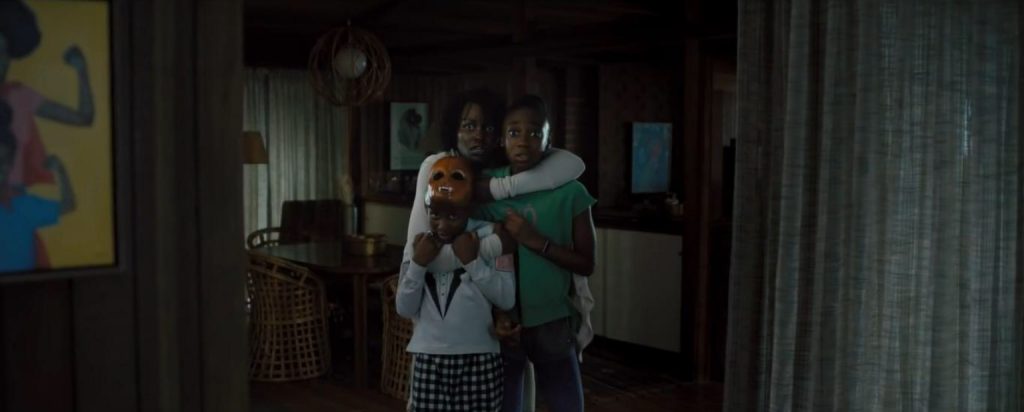
The family meets with Tim and Kitty Tyler (Tim Heidecker and Elisabeth Moss, respectively) and their teenage girls at the beach. This is a comically detached family that becomes the center of a mid-film subplot that, while never tedious, is designed to act as a pit-stop from which to propel the film into its wildly ambitious final third. Peele’s script takes its time getting to the crux of the drama, establishing the personalities of each central member of the cast before a family of strangers appears at the foot of their driveway in the dead of night. Proof that less is more, cinematographer Mike Gioulakis uses imagery to build suspense, and sound is used sparingly to elevate the already existent sense of unease. Nyong’o’s performance as her “double” is utterly captivating, and the confrontations are shrouded in the kind of mystery that places horror films of its ilk in a category of their own.
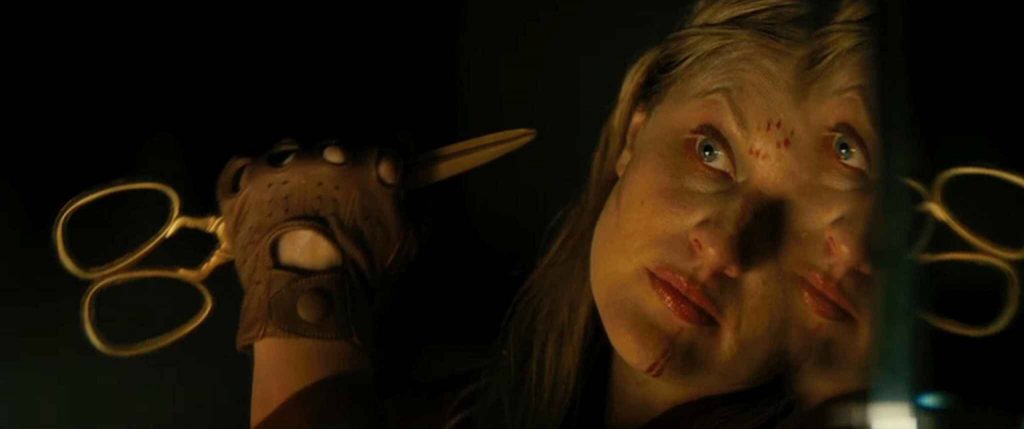
The ambiguity of the film’s final act may prove to be an aggravating point for some viewers, and it certainly demands repeat viewings. Symbolism floats in the backdrop of almost every frame, and the final act is a journey down the rabbit hole for Adelaide as she finally comes face to face with the thing that has traumatised her throughout her entire life. You might be waiting for the penny to drop, for the curtains to pull back and reveal something crucial, but it still might not become clear until the film spells it out. Even if it is, it’ll leave you with plenty to digest and a desire to scour its scenes again for answers. Michael Abels, who returns to collaborate with Peele following his work on Get Out, is instrumental in crafting a musical score that aids rather than steps on the toes of the narrative that it’s in service to.
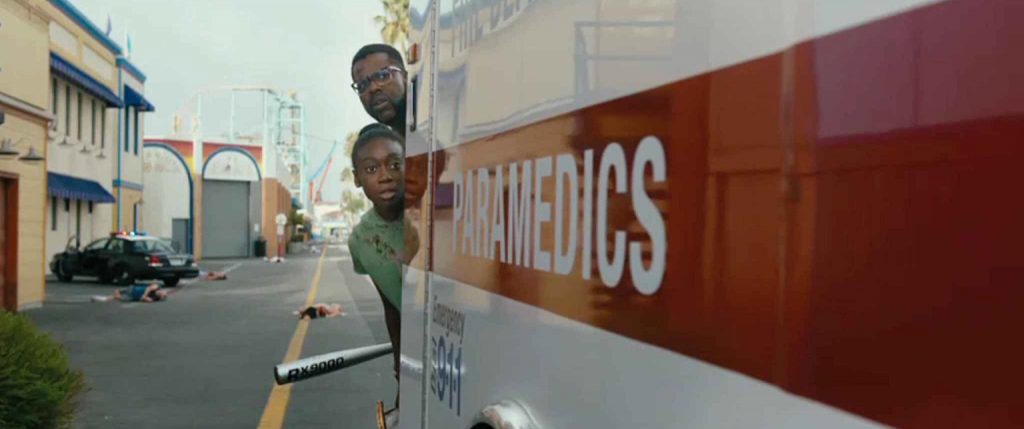
There are lingering questions that are admittedly both a good and a bad thing come the film’s finale. The overarching mystery regarding the tunnel system teased in the film’s opening text scrawl remains rather loosely explored, and it almost causes the film to crumble under the weight of its own scope. Despite that, it manages to remain riveting and, for the most part, it’s satisfyingly concluded. There’s a sense that Peele is prioritising symbolism and metaphor just slightly ahead of the narrative. Despite that, it’s not detrimental to the overall strength of the characters and their experience with this strange, haunting phenomenon.
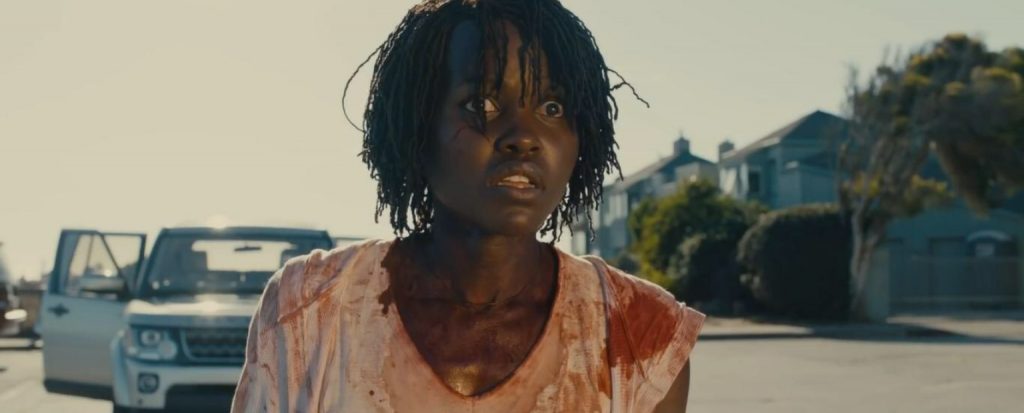
There’s thematic resonance at play here that may only really take hold hours after leaving the theater. What does it really mean to stare in the mirror and not like what’s looking back at us? And how do those that don’t have what we have really live on the other side of the line, whether that line marks the divide between poverty, race, privilege and so on? One thing is conclusive, and it’s that Peele has once again crafted a modern day ghost story that’s unwilling to cut the cord and untether its viewer from the screen. There’s no other option but to remain fixated on what’s unfolding, trusting that, when the cord is finally cut and the credits roll, you’re going to want to grab onto it and become transfixed all over again.
Film ’89 verdict – 9/10
Us is on general theatrical release now.

